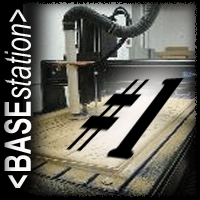Contributors to the RUBBINGzone Project are encouraged to invoke COPYfreely and COPYleft protocols. When they do, this will allow others to share their contributions almost as freely as they wish. Also, when they invoke COPYleft protocols this will allow others to embroider, reconfigure, reinterpret and/or manipulate an image/rubbing and pass it on for others to continue doing so.
PLEASE NOTE: All contributors who do not have a statement attached to their contributions saying that it is the “original work of the contributor and that copyright protocols are being asserted” it will be assumed that COPYleft protocols will apply and they will be marked accordingly. Nonetheless, to avoid any confusion contributors are requested to make their intentions clear when and as they contribute.
What are moral rights? Following the passage of the Copyright Amendment (Moral Rights) Act 2001, all Australians should now be aware of their moral rights – and artists especially so. A Moral Right is typically the concern of artists and authors. However, even when someone writes a letter they become an author and their letter is protected not only by copyright but also by Australia's new Moral Rights legislation. This is so when the letter is a business letter, or a love letter and even so when it's a letter to the editor of a newspaper albeit that this is yet to be tested in a court. Many newspapers are notoriously careless about respecting letter writers' Moral Rights and serially (and surreally!) ignore letter writers' moral rights.
NOTE: Moral rights are a type of copyright that are designed to protect the reputation of an author/artist. They are 'non-economic' rights as they do not directly confer a financial return. Unlike copyright, moral rights cannot be bought or sold or otherwise traded, Consequently, even though the author of a given text/artwork may have sold (or never owned) the copyright to text/artwork, she or he is still considered by the law to be the author and thus still retain the Moral Rights.
There are basically two moral rights. They are:
• The right of attribution (including the right against false attribution). This is the right of the author to be identified as the author of the text/artwork– as well as to object to false identifications. For example, if you print a photograph in a magazine, it is a good idea to print the photographers' name next to the image.
• And (2) The right of integrity. The right of integrity is infringed if the work or film is subjected to derogatory treatment which is prejudicial to the author's honour or reputation. Derogatory treatment has been defined to include: 'material distortion, mutilation or material alteration of a work'."
Moral rights have the same duration as ordinary copyright but the right of integrity ceases to exist with the death of the author.
In respect to the RUBBINGzone Project where NO copyright indicator appears against an image it means that the author's Copyright & Moral Rights are asserted as above.
However where a COPYfreely indicator appears it means that the author's Copyright & Moral Rights are asserted as above. However, the author(s) permits the work to be copied freely on the condition that their (the author's/maker's) authorship is acknowledged and their Moral Rights is respected. Sometimes they may also wish to impose some additional constraints – if so they will be posted and explained on this site. Typically, this will be to do with the commercial use of an image.
Where a COPYleft indicator appears it means that the author's Copyright & Moral Rights have been waived on the condition that those who copy the work and modify it in some way pass on the waived copyright they enjoyed to those copying their modification by asserting the 'copyleft protocol'
The RUBBINGzone Project almost unavoidably bumps up against various interpretations of copyright and moral rights laws (lore?) and conventions. Rather than pretend that they are not of concern it has been decided that a commentary be opened up to explore ‘the issues’. Please contribute if you have something to say by making a comment.
Tuesday, August 5, 2008
Subscribe to:
Posts (Atom)
